Please Note: This post may contain affiliate links. If you click one of them, we may receive a commission at no extra cost to you. As an Amazon Associate, I earn from qualifying purchases.
Last Updated on November 2, 2025 by Kevin Collier
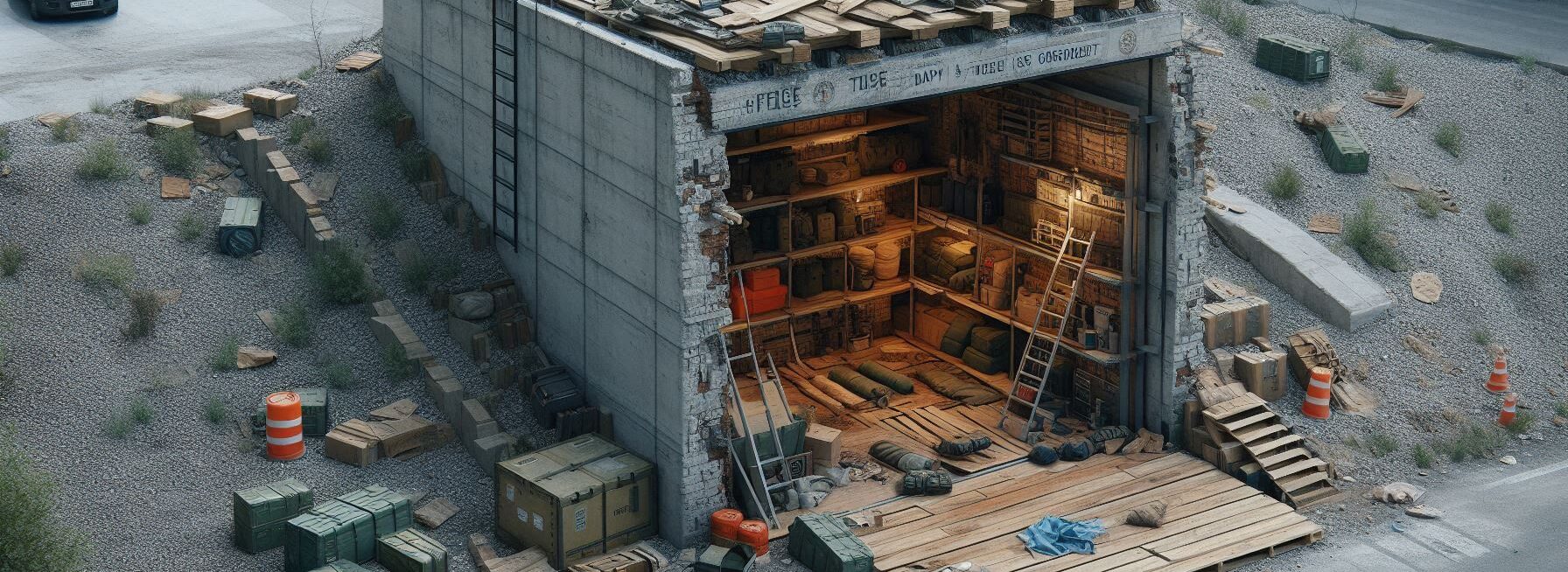
Top Takeaways and Key Concepts
- Choose a hidden, peaceful location with natural cover for your shelter.
- Gather materials like tarps, pallets, blankets, and newspapers for insulation.
- Build walls and roofs securely, ensuring ventilation and rain protection.
- Camouflage your shelter with branches, leaves, and fabric to avoid detection.
- Keep supplies, first-aid kits, and a clear exit plan nearby.
What if a calamity happened in the city and you had to live outside? No, thank you! You want a nice little place to hide, right? Something that makes you feel safe and cozy. A shelter that seems like a secret fort, but without the raccoons who keep trying to steal your food.
Let's work this out together. First, pick a peaceful location in your yard or a corner. Find a spot that isn't too busy. Bushes and trees can help keep your hideout hidden. They will work like curtains for you. No one can see you, right?
Consider what you'll need. You want it to feel like home. You may get some old blankets or a sleeping bag to keep warm. A couple of cushions can make everything even more comfortable. Use battery-powered lanterns to add some illumination. At night, they are protected and warm. You don't want to feel like you're camping in the middle of a scary movie.
Now, keeping it warm is only half of the deal. It also needs to be safe. Make sure those doors are well covered. You can use mats or even sticks and leaves to keep others from seeing your hidden hiding place.
Safety, safety, safety. Having some things on hand is helpful. You need first-aid kits! And some nibbles. Granola bars don't take up a lot of room. And, of course, some water. It's always excellent to drink a lot of water.
Think about what you would name your shelter after it's up. “The Cozy Castle”? “Secret Hideaway”? It gives it a special feel. You could want to decorate it a little, such by drawing on some pebbles or hanging up tiny things you find. You know, it makes it yours.
You're not merely making a place to live. You're making a safe place for you to unwind. And let's be honest, who wouldn't want a comfy spot to curl up in?
So, get your materials together and start making your own small paradise. With a little imagination, it will be the perfect place to get away from the chaos of the city. You can do this!
Contents of This Page
*** Shop for Survival Gear - Tools - Kits ***
Survival Gear - Bags and Backpacks - Knives - Boots/Footwear - Communication
Outdoor Cooking - Gloves - Hydration - Dry Boxes - Water Filtration Systems
Tents - Sleeping Bags - First Aid Kits - Multi-Tools - Flashlights - Fire Starters
Navigation - Survival Food - Night Vision - Headlamps - Stun Guns - Binoculars
Choosing the Right Location: The Art of Disguise
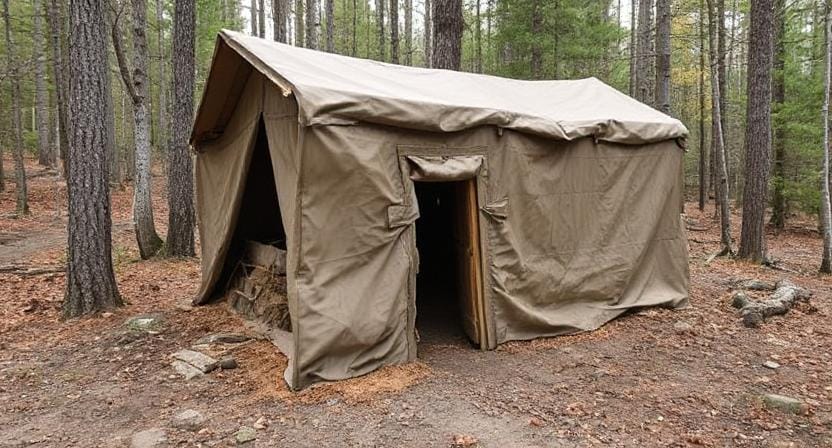
First things first: where you live is really important! Finding the best place for your shelter is like choosing the best avocado at the store: you need to be patient and have a good eye. Look for places that are hidden but still easy to get to.
Think about empty buildings or lots that have grown over. Just make sure to look for “No Trespassing” signs unless you're feeling very brave.
Also, don't forget about alleys! They might smell like last week's takeout, but they can be terrific cover. Just make sure they're not too shady, as you don't want any unwelcome guests. And let's be honest: no one wants to invite someone who thinks they're auditioning for a reality show about urban survival into their secret lair.
Getting Things Ready: Your Urban Treasure Hunt
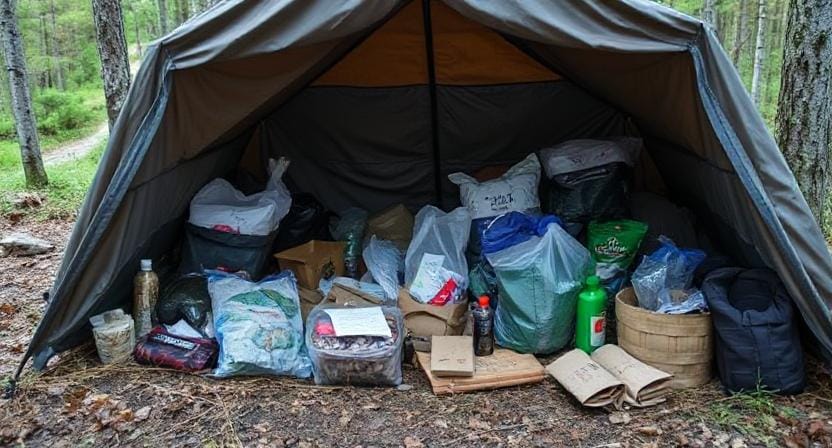
It's time to get the materials now that you've identified your great real estate. This is where it gets interesting: picture yourself as a pirate in the city looking for riches (but without the parrot).
Look around for things that people have thrown away, including old tarps, pallets, or even cardboard boxes. It may not sound spectacular, but believe me, one person's trash is another person's emergency shelter foundation!
If you can get some heavy-duty plastic sheeting or blankets from nearby dumpsters (with permission!), you'll be well on your way to making a warm area.
And while we're on the subject of comfort, don't forget about insulation! Old newspapers are great insulators. Just think of how much fun it was to read them before everything went digital.
The Crafty Architect: How to Build Your Shelter
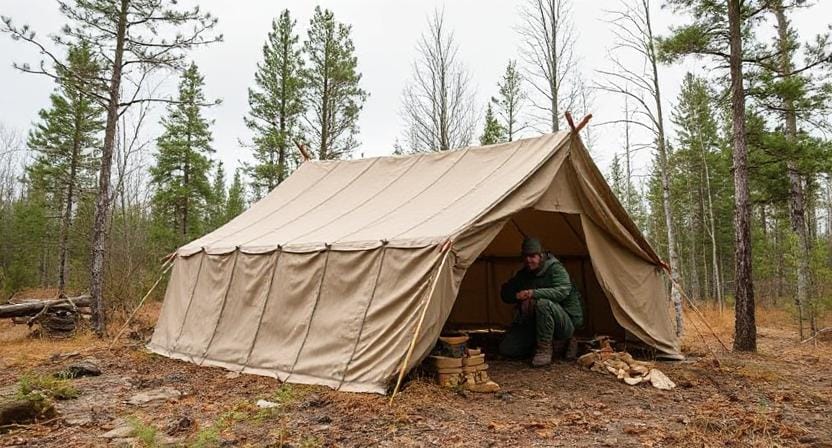
Okay, now we can start building! There are different ways to build your shelter depending on the materials you've found. If you want to use pallets as walls (because why not?), stack them in a U-shape and bind them together with rope or zip ties. You know those tiny things that seem pointless until they save your life?
If you want to build a tarp (which sounds elegant), hang it over strong trees or poles. Check to be that it's tight enough so that rain doesn't ruin your party—nobody wants to eat soggy appetizers while hiding from calamity!
Let's see… ventilation is important too! After just one night in your stylish new home, you don't want it to smell like wet dog mixed with sadness. Leave gaps near the top to let air flow, or make small holes covered with mesh fabric if bugs start to show up.
How to Hide: Be a Hide and Seek Champion
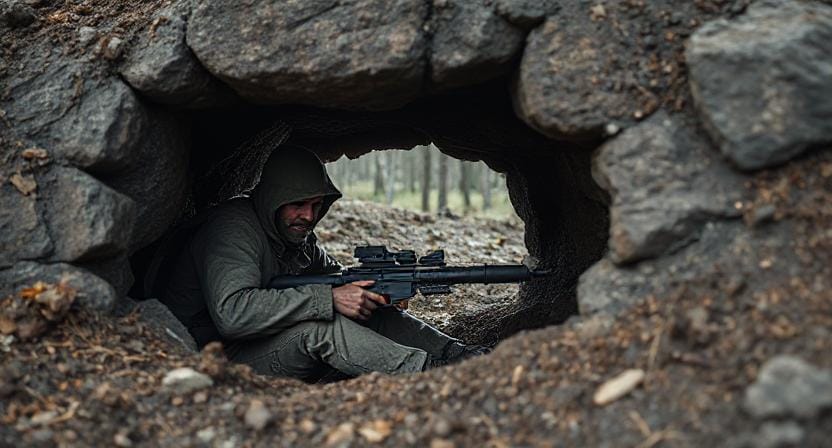
It's time to use spy movie-style hiding techniques once your bunker is completed and looks great (or at least works). Camouflage is really important here. Use leaves and branches from trees or shrubs nearby to blend in with nature. By nature, I mean any plants that are still alive in this concrete terrain.
Speaking about that, stacking materials is also quite helpful! Put more tarps or fabrics over the areas of your building that are open. This is like giving your shelter a fashion makeover.
Believe me, if someone finds it while walking about town after the crisis, they'll probably think it's just another pile of trash left behind by people who don't care.
And we shouldn't forget about keeping the noise down! A loud, creaky floor constructed of pallets can give away your location faster than my cat can when she detects a squirrel outdoors. Put soft things under places where people walk, like blankets.
Safety Considerations: Stay Smart and Secure
Let's just say that you have done an amazing job creating your secret emergency shelter. A cozy home away from home! Just remember, safety is super important. You’ve got to keep it on your mind, even if it’s tucked away where no one can see it.
Check the area around your hideout. Look for anything that could be a problem, like wild animals. No one wants a surprise visit from a curious raccoon, right? Or other folks who might be looking for a place to crash. Better safe than sorry!
Keep your eyes open. If you hear weird noises or see something moving, peek outside. A little caution goes a long way. It’s like being a superhero—always alert!
Having supplies close by can make a big difference. A flashlight can help if you need to look around at night. It can also be a handy tool if you get an uninvited guest. Just a little wiggle of the light can scare off most critters, and it’ll keep your space lit if the power goes out!
Think about an exit plan, too. If things ever feel off, you want to know how to get out quickly. It’s like being ready for a fire drill at school. Just plan it out, and you won’t be caught off guard. Maybe think of two ways to leave your shelter safely.
Feeling secure in your little place is key. You’ve worked hard to build it. A little planning helps keep it safe.
Stay alert, keep your flashlight handy, and remember to check your surroundings. You’re doing great out there! Building your own comfortable hideout is a fantastic step.
Frequently Asked Questions
How do I select a good hidden location for an urban emergency shelter?
Pick a low-traffic area with natural cover such as bushes, fences, or abandoned corners so your shelter blends into its surroundings.
What common materials can be used to build an urban hideaway?
Tarps, pallets, cardboard, blankets, newspapers, and scrap boards work well for walls, roofs, insulation, and ground barriers.
How do I protect my shelter from rain and moisture?
Build angled roofing and secure tarp edges tightly, leaving ventilation gaps high so air circulates without letting rain in.
How can I keep the shelter hidden from others?
Camouflage with branches, leaves, dull-colored fabric, and shapes that mimic trash piles or natural brush rather than a defined structure.
What supplies should be kept inside the shelter?
Keep a small kit with water, snacks, a first-aid kit, light source, and insulating layers like blankets for warmth.
Why is ventilation important in a compact hidden shelter?
Airflow prevents moisture buildup, reduces condensation, and keeps the interior from becoming stale or unsafe to breathe.
Should I plan an escape route from my shelter?
Yes, always identify at least one secondary exit so you can leave quickly if danger or unwanted attention approaches.
Suggested Resources:
Survival Blog
https://www.survivalblog.com
Urban Survival Site
https://wwwurbansurvivalsite.com
Prepper Journal
https://www.theprepperjournal.com

Kevin Collier is a seasoned survivalist and expert in prepping and homesteading, contributing to WiseSurvive.com. With a deep-rooted passion for self-sufficiency and outdoor survival skills, Kevin shares practical advice, strategies, and resources to help individuals prepare for any challenge. His informative articles cover a range of topics, from essential survival techniques to sustainable living practices, empowering readers to thrive in any situation. Whether you're a novice or a seasoned prepper, Kevin's insights will inspire you to take charge of your readiness and build resilience for the future.




